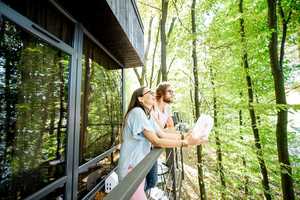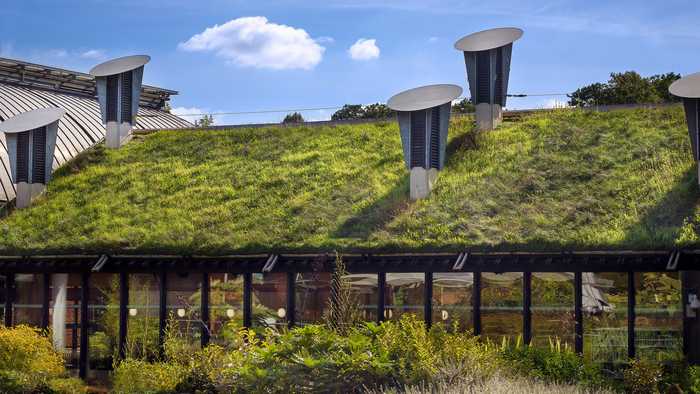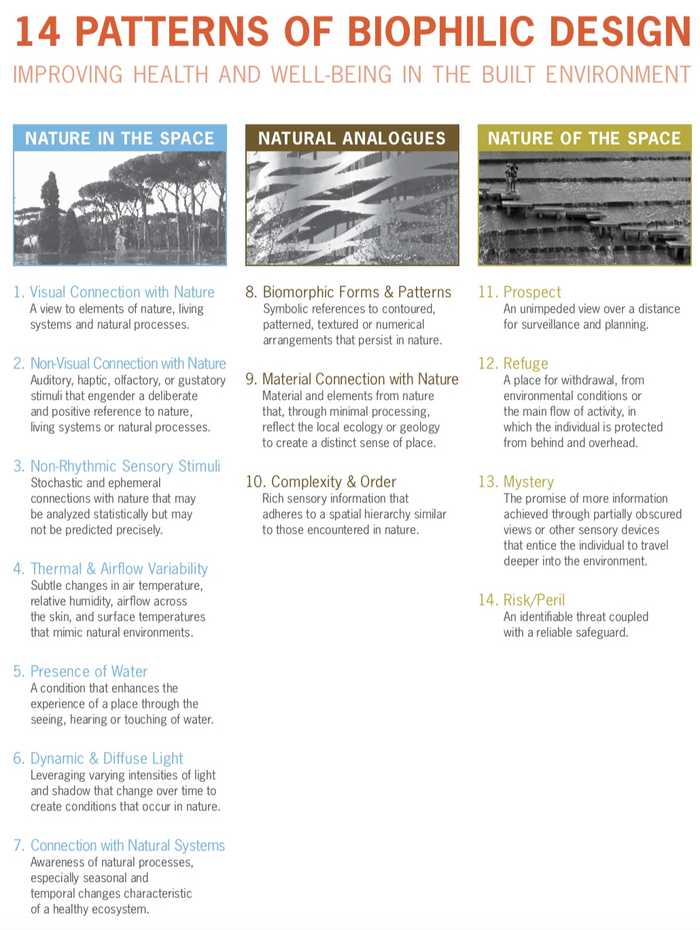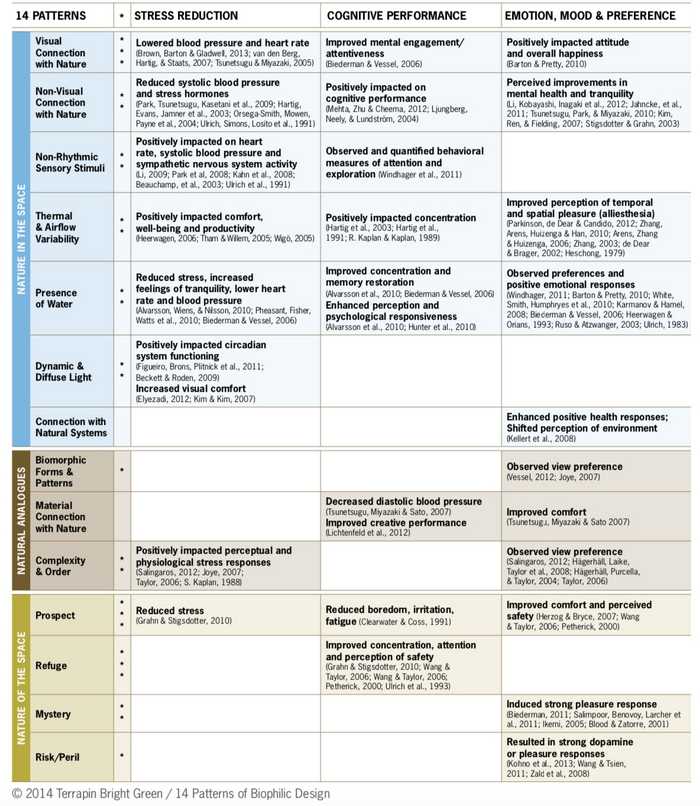14 patterns in nature and how they add happiness to our daily lives
“In every walk with nature one receives far more than one seeks.”- John Muir, 19 July 1877
I have stumbled upon an article, which I found absolutely fascinating, so I thought I would share it here. I do not take any credit for any of the info in these pages, I’m merely copying salient points and I include a link to the full paper at the bottom of this article.
This paper is to do with Biophilia, no, it’s not a fear of leaves!

Biophilia is the humankind’s innate biological connection with nature. It helps explain why crackling fires and crashing waves captivate us; why a garden view can enhance our creativity; why shadows and heights instill fascination and fear; and why animal companionship and strolling through a park have restorative, healing effects
Biophilic design in architecture can reduce stress, improve cognitive function and creativity, improve our well-being and expedite healing; as the world population continues to urbanise, these qualities are ever more important.
[Yannick Joye Review of General Psychology, vol. 11, 4: Architectural Lessons from environmental Psychology: the case of Biophilic Architecture pp. 305-328. , First Published Dec 1, 2007.]
A review of findings from the field of environmental psychology shows that humans are aesthetically attracted to natural contents and to particular landscape configurations. These features are also found to have positive effects on human functioning and can reduce stress. However, opportunities for contact with these elements are reduced in modern urban life. It is argued how this evolution can have subtle but nontrivial adverse effects on psychological and physiological well-being. These can be countered by integrating key features of natural contents and structural landscape features in the built environment. Several practical proposals are discussed, ranging from literal imitations of natural objects (such as plants) to the use of nature's fractal geometry in an architectural context.
Terrapin Bright Green was founded in 2006 by distinguished environmental strategist Bill Browning and architects Rick Cook and Bob Fox of the prestigious firm COOKFOX Architects. Chris Garvin, an accomplished green architect, soon joined the firm. This architectural firm has identified 14 biophilic design patterns that can help us to implement this study on how we create the spaces surrounding us.

Nature in the Space addresses spatial configurations in nature
1. Visual Connection with Nature. A view to elements of nature, living systems and natural processes.
2. Non-Visual Connection with Nature. Auditory, haptic, olfactory, or gustatory stimuli that engender a deliberate and positive reference to nature, living systems or natural processes.
3. Non-Rhythmic Sensory Stimuli. Stochastic and ephemeral connections with nature that may be analysed statistically but may not be predicted precisely.
4. Thermal & Airflow Variability. Subtle changes in air temperature, relative humidity, airflow across the skin, and surface temperatures that mimic natural environments.
5. Presence of Water. A condition that enhances the experience of a place through seeing, hearing or touching water.
6. Dynamic & Diffuse Light. Leverages varying intensities of light and shadow that change over time to create conditions that occur in nature.
7. Connection with Natural Systems. Awareness of natural processes, especially seasonal and temporal changes characteristic of a healthy ecosystem.
Natural Analogues addresses organic, non-living and indirect evocations of nature. Objects, materials, colors, shapes, sequences and patterns found in nature, manifest as artwork, ornamentation, furniture, décor, and textiles in the built environment.
Natural Analogues encompasses three patterns of biophilic design:
8. Biomorphic Forms & Patterns. Symbolic references to contoured, patterned, textured or numerical arrangements that persist in nature.
9. Material Connection with Nature. Materials and elements from nature that, through minimal processing, reflect the local ecology or geology and create a distinct sense of place.
10. Complexity & Order. Rich sensory information that adheres to a spatial hierarchy similar to those encountered in nature.
Nature of the Space encompasses four biophilic design patterns:
11. Prospect. An unimpeded view over a distance, for surveillance and planning.
12. Refuge. A place for withdrawal from environmental conditions or the main flow of activity, in which the individual is protected from behind and overhead.
13. Mystery. The promise of more information, achieved through partially obscured views or other sensory devices that entice the individual to travel deeper into the environment.
14. Risk/Peril. An identifiable threat coupled with a reliable safeguard.

The really interesting part is how we react to these patterns and stimuli. See below a table detailing Biophilic Design and biological responses

The paper continues on showing how these patterns can be implemented in every day design. It is a wordy article, but I will be studying it this coming week and will provide some useful everyday examples of how we can use this information. I will put this out next week
“...biophilia is not a single instinct but a complex of learning rules that can be teased apart and analyzed individually. the feelings molded by the learning rules fall along several emotional spectra: from attraction to aversion, from awe to indifference, from peacefulness to fear-driven anxiety.”
Edward O. Wilson, 1993 Biophilia and the Conservation ethic, The Biophilia Hypothesis
Posted on April 30th 2020
